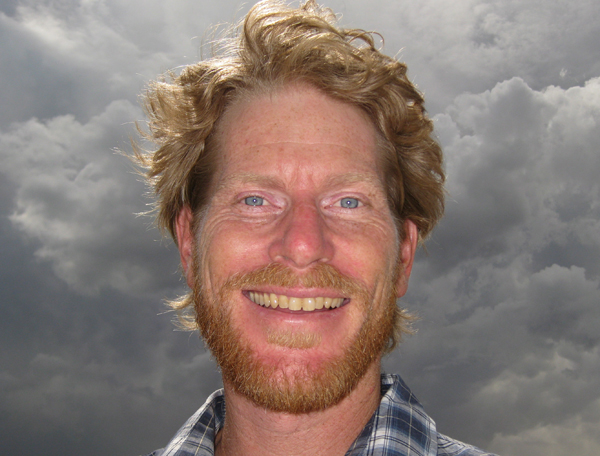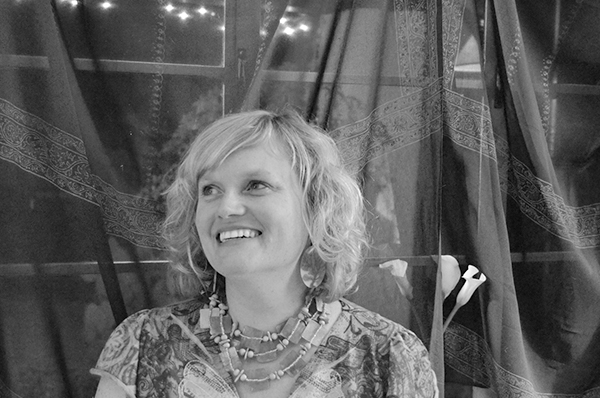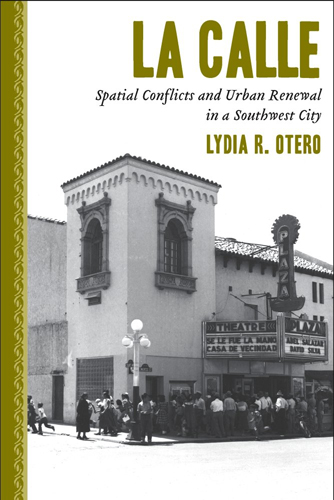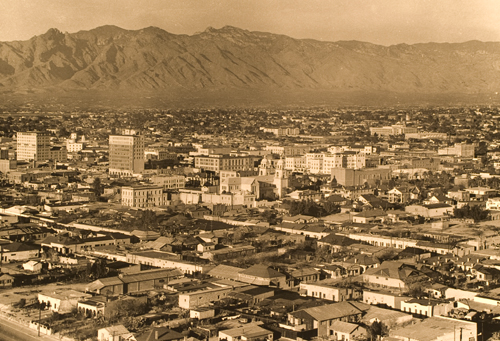Embrace & Harvest the Rain
Most desert dwellers love, crave, the summer monsoons.
The magical intensity of clouds building up to bring forth los chubascos results in a full-body experience. The scent and taste of the showers, the cooling of the air; the visuals of grey and purple skies lit up by white-hot lightning, the BOOM of the thunder claps and the sound of the sheeting downpours is always so mind-blowing.
What isn’t so awesome are the resultant flooded streets, trying to navigate roads turned into rivers, while watching rainwater whisked away from thirsty ground.
Locally, lassoing rainwater to change the dire and dangerous flooding has been turning tide with the help of many organizations, city codes and the tireless work of Brad Lancaster.
Lancaster is a Tucson gem and water harvesting guru who, according to his bio at HarvestingRainwater.com, culls from the sky, at his abode, “100,000 gallons of rainwater a year on a 1/8-acre urban lot and adjoining right-of-way.”
Anyone who has watched the evolution of Lancaster’s Dunbar/Spring ‘hood over the last decade knows this. A few months ago at a lunch meeting with Arizona State Representative Steve Farley, Lancaster’s efforts came up and the District 28 Democratic Representative said: “Brad Lancaster has transformed that neighborhood.”
Besides transforming a neighborhood, Lancaster has helped to transform a city, and a dominant paradigm in a country that regards water as an endless resource that comes from the spigot. In 2006, he released his first book, Rainwater Harvesting for Drylands Volume 1: Guiding Principles, and followed that up with Rainwater Harvesting for Drylands and Beyond Volume 2: Water-Harvesting Earth Works in 2008.
This June, Lancaster released a second edition to Rainwater Harvesting for Drylands Volume 1, which features “100 pages of new information, 120 new images, 40 additional images revised, and more,” he wrote via email.
Lancaster was a road warrior in June 2013, spreading rain harvesting techniques on a whirlwind tour of seminars, talks and book signings between New Mexico, Colorado, Utah, Nevada and California. We tried to connect on the phone, but his vehicular travels between the mountainous regions of Utah and Nevada thwarted cell phone interview efforts.
We settled on an email exchange about Volume 1’s upcoming new addition, his thoughts about Tucson’s efforts in the rain harvesting arena and advice for the novices interested in saving water from the sky.
Zocalo Magazine: We caught you at a really busy time! Looks like June has been packed with events – book signings, readings, seminars and talks. How long have you been on the road for this last go-round?
Brad Lancaster: Well. I was a relative hermit working on finishing the book before its release on June 13 (2013). Though this past spring, I did teach in Baja, Mexico; Madrid, NM; Albuquerque, NM and a few other locations. But now that the book is out I’ve been on the road since June 13. I’ll return July 1. The Events section of my website lists some of my upcoming events. Some teaching trips abroad, perhaps not yet listed, include southern Italy and Ciudad Obregon, Mexico.
ZM: For the novice, let’s say a mid-westerner or an east-coast transplant to Tucson, what basic steps would you recommend one takes for getting their proverbial feet wet (and not getting overwhelmed!)
BL: Get out in the rain to see where it goes, where the runoff flows, how much there is, and the tremendous potential you’ll likely have to harvest. This is the really fun stuff – dancing in the rain!
Then I recommend they simply shape the earth with a shovel (when the soil is moist and easy to work) to redirect the runoff to their plantings where it is a resource, rather than to the street or elsewhere where the water is wasted and lost.
Often this entails digging a simple basin around or beside plantings, using the dug out soil to create a section of raised pathway that will redirect and harvest still more water. Then harvest organic matter and fertility as well by mulching the basin with organic matter, or at the very least just let any fallen leaves beneficially collect there.
We call leaves “leaves” because we are supposed to leave them where they fall beneath plants (in water-harvesting earthworks) where the leaves (and cut up prunings) will break down and build healthier, more water-absorbent, more fertile soil for free.
ZM: Have you seen positive changes locally, regionally, nationally when it comes to harvesting rainwater?
 BL: Yes. When the first edition of my first book was released in 2006, it seemed only a few people were harvesting water. Now there are many, many more citizens, businesses and neighborhoods doing it all over town, the southwest and the globe.
BL: Yes. When the first edition of my first book was released in 2006, it seemed only a few people were harvesting water. Now there are many, many more citizens, businesses and neighborhoods doing it all over town, the southwest and the globe.
Tens of thousands have been inspired into action by my books, presentations, and teachings.
And these numbers are swelling even more by the work of a growing number of water-harvesting installers, groups teaching and promoting water harvesting such as Watershed Management Group, Sonoran Permaculture Guild, our City, and people creating demonstration sites on their property, at their kid’s schools, or in the public right-of-way along their neighborhood streets.
For example, when I started harvesting water I was the only one doing so on my block. Now 80% of the folks on my block do so!
ZM: What would you like to see from Tucson’s citizens and city government? What aspects do you applaud and where can we improve?
BL: I would like Tucson to be known as a water-harvesting capital of the southwest. Thus I’d like passive water harvesting to be the norm in every private, public, and commercial landscape in such a way that rainwater and storm water runoff would be the primary irrigation sources of all our landscapes, and greywater would be a secondary source where available. This would be a huge shift from the current common/dominant practice of using drinking water from Tucson Water as the sole source of irrigation water in most landscapes.
I would also like to see Tucson become a sun-harvesting capital of the southwest where every new or retrofitted building and landscape is oriented and designed to maximize the free winter heat and light of the sun, while maximizing the free cooling of shade in summer. In addition, Tucson should get the majority of its power and water heating from our abundant sun, rather than coal and natural gas. A solar rights act protecting buildings’ year-round access to the sun for active and passive solar harvesting is key to this. New Mexico already has such a solar rights act in place, which could inform our efforts.
My new book shows many ways to do this, while also harnessing other free on-site resources such as the wind and community.
I applaud those who have already made this a reality in their own lives, homes, businesses, and/or schools and places of worship.
I also applaud the City for its incentives such as the $2,000 per home rainwater-harvesting rebates and the $1,000 per home grey-water harvesting rebates. I also applaud the City for mandating that commercial landscapes provide at least 50% of their irrigation needs with harvested rainwater, and all new city streets harvest at least the volume of water falling in a half inch rainstorm. I want to see this mandated for all new private streets in new housing developments as well.
ZM: What will your talk and demonstration cover at the downtown library on July 27?
BL: I will cover all the above and more in an entertaining and informative way. I’ll show folks myriad ways we can simultaneously enhance the quality of all our lives, our community, our economy, and our environment. I’ll show folks how we can all enhance more vibrant life.
The July 27 event runs from 11am-1pm at 101 N. Stone Ave. Details on it, and Lancaster’s techniques, are at HarvestingRainwater.com.



 The background may be personal, but the themes are universal. Like a great song, any story that is relatable to diverse individuals channels the waters of humanity’s collective unconscious. The ability to craft symbolism that speaks to unique viewpoints is a gift.
The background may be personal, but the themes are universal. Like a great song, any story that is relatable to diverse individuals channels the waters of humanity’s collective unconscious. The ability to craft symbolism that speaks to unique viewpoints is a gift. Boom, Bust, Boom: A Story About Copper, the Metal that Runs the World, by Bill Carter
Boom, Bust, Boom: A Story About Copper, the Metal that Runs the World, by Bill Carter

 Science will not embrace visceral knowledge without evidence to back it. What humans, and our species’ ancestors, have innately known about the importance of music for hundreds of thousands of years is now being proven through modern science. Namely, that music and/or sound are fundamental aspects of individuals, societies, creatures on this planet, Earth, other planets and the universe as a whole.
Science will not embrace visceral knowledge without evidence to back it. What humans, and our species’ ancestors, have innately known about the importance of music for hundreds of thousands of years is now being proven through modern science. Namely, that music and/or sound are fundamental aspects of individuals, societies, creatures on this planet, Earth, other planets and the universe as a whole.



Also find us on...